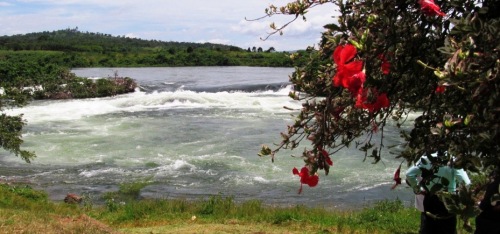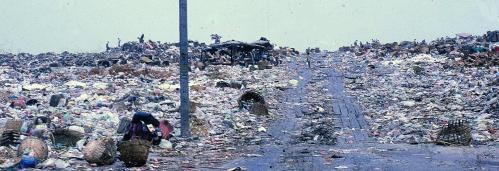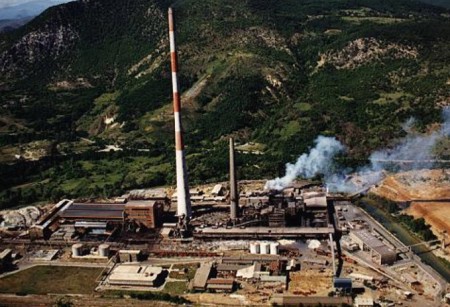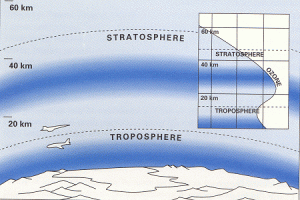Education for sustainable development (ESD) – do we really need it?
Several issues threaten the sustainability of our planet:
- Global warming and climate change are rapidly becoming the big issues of our time. – Transformative education, innovations, ingenuity, creativity, energy efficiency, massive public and private investments in “green” technologies and new, more responsible attitudes are some of the answers to the challenges |AR6 Climate Change 2021: The Physical Science Basis || Climate reality project || IPCC Synthesis report 2014 || U.N. Panel Issues Its Starkest Warning Yet on Global Warming (NYT Nov 2014) || UNEP: GEO5 atmosphere || IEA -Key World Energy Statistics 2015 || Climate literacy – basic principles of climate science || IPCC (2013) The Physical Science Basis || IPCC: Climate Change 2014: Impacts, Adaptation, and Vulnerability || IPCC (2014) Mitigation of climate change || The NOAA greenhouse gas index || Renewables to lead world power market growth to 2020 (IEA Nov 2015) | || Consensus statement from global scientists || Climate change: evidence, impacts and choices (NRC) || “Arctic Matters: The Global Connection to Changes in the Arctic” National Research Council of the National Academies (2016) || Images of change (NASA satellite images) | NASA: Global climate change || NOAA Climate || Climate change in facts and figures || WMO climate || UNEP: Climate || Our Changing Planet (US) || CICERO: Climate || The Climate Change Performance Index || National Academics / National Research Council: Climate change – lines of evidence video series || The Climate and Development Knowledge Network (CDKN) || World Bank, 2012, Turn Down the Heat: Why a 4°C World Must Be Avoided || National Academies: A Discussion on Climate Change: Evidence and Causes (March 2014) || AAAS 2014: What we know || The Keeling curve (Scripps, March 2014) || Climate Panel Stunner: Avoiding Climate Catastrophe Is Super Cheap — But Only If We Act Now (April 2014) || Deep Decarbonization Pathways Project (DDPP) || National Climate Assessment and Development Advisory Committee (May 2014) || Environic foundation || Atlas of mortality and economic losses from weather, climate and water extremes (WMO 2014) || Climate change a “threat multiplier” for farming-dependent states-analysis || Pentagon: Global Warming Poses ‘Immediate Risk’ To National Security || Climate Justice and Equity || Global Apollo Programme – to combat climate change || Morgan Freeman’s Powerful Climate Change Short Film || NASA: Global warming || Bloomberg: What’s really warming the world? | This Is What the World Will Look Like After Climate Change

Maldive islands – vulnerable to rising seas. Photo: Å. Bjørke
,
- Biological diversity: the Earth’s biological resources – the incredibly complex pool of genes giving the biosphere its abundance of species and almost endless variations of life – is under severe threat. There are more species being extinguished per year now than 6o million years ago when the dinosaurs disappeared. How do we halt the destruction of species? How do we secure the diversity of the genetic pool of the biosphere? | Biodiversity: Life – a status report (Nature 2014) | Biodiversity – an urgent issue | Biosphere & biodiversity | UNEP GEO5 biodiversity | Put a value on nature (TED) | Racing extinction | Environmental atlas (EEA) | Foundation for deep ecology | Fast-moving climate zones and extinction | The economics of ecosystems and biodiversity (TEEB) | When Nature Gets a Price Tag | Valuing natural capital essential to business survival | Ignorance is not bliss | Biodiversity Loss Becoming Major Threat For Farmed Plants And Livestock Breeds | Endangered species act | The global war against nature | Humans Are Causing Largest Die-Off Since Dinosaur Age | Climate change ‘raises extinction risk’ | Racing Extinction: A Must-See Documentary of 2015, World Premier at Sundance | EEA State of the environment report Europe 2015 | Racing extinction | Earth has entered sixth mass extinction, warn scientists |
Ethics, Justice and the Convention on Biological Diversity | Frogs Are on the Verge of Mass Extinction, Scientists Say
Wildlife at Sigiriya, Sri lanka. Photo:Å. Bjørke
;
- Forests are important for the global climate, for our common future and for hundreds of millions of people who live there. The rainforest is one of the world’s oldest ecosystems, over 60 million years. Rainforests existed when dinosaurs roamed the Earth, and the continents gathered in Gondwanaland. The genetic pool of the lifeforms in the world’s forests are to a large extent unmapped. Forests give vital ecosystem services, prevent erosion, hold and rinse freshwater, produce oxygen, food and give shelter to animals and humans. Land and forest (UNEP GEO5) | The Sahara forest project | New Interactive Tool Helps Track Earth’s Forests | Vital Forest Graphics (GRID-A) | Earth Has Lost Half of Its Trees Since the Dawn of Civilization | Forests are key to sustainable development | In the fight to stop climate change, forests are a vital weapon (Guardian) |

West Mau rain forest, Kenya (Photo: Å. Bjørke)
,
- Freshwater is the basis for life. More droughts, increasing depletion of groundwater sources and more severe floods are serious threats to life several places on Earth. How do we preserve and manage water more efficiently? How do we clean polluted water in better ways? Introduction to water | Why care about water? | Virtual water (NG) | Virtual Water and Sustainability | World water crisis | Is time running out for saving our drinking water? | International water association | IWRM | Physical resources – water, pollution, minerals | Twenty more Niles needed to feed growing populations | Water for life | UNEP:GEO5-water | Water privatisation in Africa | Water privatisation | Rainwater harvesting | Nature’s silent currency -water | Water resources – impacts and adaptation | Water and industry | Water security | Water footprint assessment | 30 facts about the coming water crisis | Act now to avert global water crisis | Water: The Most Critical Asset in Your Production Strategy | The global water crisis – why water politics matter for business security | Water Wars: Egyptians Condemn Ethiopia’s Nile Dam Project | The end of abundance | Water (Guardian hub) | Water world | Colorado river and water distribution | Water Shortage Seen Worsening on Climate Change in Potsdam Study | The Importance of Water to the US Economy | Arab World Sinks Deeper into Water Crisis, Warns UNDP | Water online | Where will the world’s water conflicts erupt? | New material sucks water from the air | At the Crucial Nexus of Water and Energy | A world without water | Why Water Is A Critical Business Issue | Water Pressures in Central Asia | NASA Bombshell: Global Groundwater Crisis Threatens Our Food Supplies And Our Security (Oct 2014) | Water-Energy-Food Nexus in Arab Countries (Nov 2014) | How to harvest rainwater | NASA: Show me the water | Freshwater Management Outlook for UAE | 8 Shocking Facts About Water Consumption | UN World water development report 2014 | 5 Top Clean Energy Stories of 2014 || Sick water? The central role of wastewater management in sustainable development || Vital water graphics (GRID-A) || Blue Is the New Black: Improving Water Management Yields Multiple Resilience Benefits || Water in the world we want (UNUINWEH 2015) || Dry heat – Colorado (May 2015) || Earth’s largest groundwater aquifers are past ‘sustainability tipping points’ || 8 Major Cities Running Out of Water || In Peru water is a high price for Lima’s poor (BBC, Oct 2015) ||

The White Nile starts here, at Jinja, Uganda. Lake Victoria throws itself into the river. What happens to the flow of the Nile with climate change, more irrigation on the shores of the lake, and more dams along the river?
,
- Natural resources may be perceived as endless and eternal. They are not. We quickly approach “peak oil“, “peak phosphate“, “peak coal” etc. How do we handle a resource crisis – if just the richest can afford buying the resources we all need? Story of stuff | Running out of phosphorus? | Were the Peak Oil Theorists Right?. | Le pic pétrolier n’aura pas lieu! | Full Planet, Empty Plates: The New Geopolitics of Food Scarcity | EEA State of the environment report Europe 2015 |

Can some natural resources run out? Charcoal, Uganda. Photo: Å. Bjørke
.
- Waste – Our current economic system produces enormous amounts of waste. The biggest human “constructions” ever are our garbage dumps. How do we reduce, reuse and recycle much more efficiently? How do we get our waste into the ecological cycles? Story of stuff – consumption | How Waste Collection is cleaning Up | UNEP GEO5 Chemicals and waste | Garbage to green in 5 steps | The pacific garbage patch | Midway | Waves of Trash in Indonesia | Toxic ‘e-waste’ dumped in poor nations, says United Nations | Food Waste Management Scenario | Integrated waste management | Zero waste in action | Everything Wrong With Humanity, In One Short Animation | The Five Ws of Recycling: What, Why, When, Where, Who (and How) | Yes, Richer Countries Produce More Waste. But Do They Have To? | Vital waste graphics 1 and 3 (GRID-Arendal) |
,
- Chemicals – It is becoming increasingly evident that in combination some chemicals can cause harmful effects in wildlife species, in laboratory animals, and in humans, even in concentrations considered safe for the individual chemical. Chemical cocktails – a serious matter of concern | Why is autism drastically on the rise? A chemical horror story | Harmful substances (UNEP) | How we could prevent massive bee death and save our food | Pure strategies | Toxic waste | Poisoning the poor – Electronic Waste in Ghana | Why Basic Protections from Harmful Chemicals Are So Hard to Get | Principles of green chemistry and engineering | The 10 Most Toxic Cities in the World | Another Toxic Threat from Climate Change | Generation Toxic | How to Prevent Chemicals from Draining Our Brains | Millions Of Acres Of Chinese Farmland Too Polluted To Grow Food, Highlighting Growing Threat | Pesticides halve bees’ pollen gathering ability, research shows | Your Life Is the Lab: Toxic Chemicals in 5 Unexpected Places | The case of the vanishing bees | China’s Silent Spring (March 2015| Pollution is one of the world’s biggest killers, a new study says |(Oct 2017) |
. - The Oceans are stressed, polluted, overtaxed, increasingly acidic. Efficient global management is urgently needed. | Oceans Face Triple Threat Of Warming, Declining Oxygen And Acidification, Study Shows | Fishing and conservation | Dark cloud over fisheries | Sylvia Earle: Save our oceans (TED) | Losing Nemo: short animated film about industrial overfishing | The true value of our oceans | Plasticised | | Protect the Coral reefs | What good are Coral reefs? | Sailing past plastics | Plastic Junk Litters our Oceans, Killing Sea Life — And it’s Getting Worse | The ocean cleanup project | UN -The ocean compact | Where have all the cod gone? (NYT Jan 2015) | Blue Carbon – The Role of Healthy Oceans in Binding Carbon | Marine defaunation: Animal loss in the global ocean (Science, Jan 2015) | Coral reefs about to crash in a big way (jan 2015) | Inside the Garbage of the World Documentary – crisis in our oceans video | There Are Half as Many Fish in the World’s Oceans as There Were in 1970 | Paul Watson: If the Ocean Dies, We Die! | Incredible Infographic Shows How We Have Ruined Our Oceans — and Ourselves as a Result | Coral reefs can be resilient to warming | Overfishing causing global catches to fall three times faster than estimated (Jan 2016) | Study: Deep Ocean Waters Trapping Vast Store of Heat (Jan 2016) | Toxic Algae Blooms: Fish Are Dying … Beaches Are Closing … People Are Getting Sick (July 2016) ||
,
- Population control. All our systems – liberalism, socialism, mercantilism, keynesianism, neo-liberalism etc are based on philosophies formed when the human population on Earth was less than 2 billion people. All world religions were formed when the world population was less than a billion people. We have no clear system in place for handling seven billion people – not to speak about the nine billion people we will be in 30 years. The most efficient way to reduce population growth is education, especially female higher education. World population meter | Population and consumption key to the future (BBC April 2012) | Population growth increases climate fear | Population bulletin (2004) Transitions in world population | Hardin: the tragedy of the commons | A Smartypants Scientist Makes An Easy Analogy About Our Planet, And Now I’m Scared | Ageing populations in the OECD | Population pyramids | Demographic Transition and Population Pyramids | What stops population growth? | The Case for Investing in Girls | Hans Rosling: Debunking the myth that helping the poor is causing overpopulation (video) | Hans Rosling: The best stats (TED lecture) | Hans Rosling: Will saving poor children lead to overpopulation? | Population action | Economics of birth control | Overpopulation is still the problem | Rosling (2013) Demography and climate change | | EEA State of the environment report Europe 2015 |
,
- Ecology, development and economy are interrelated. Development is necessary for ensuring ecologically sound economical practices. How can we transform our economies from “cowboy-economy” to “space-ship economy”? How can we secure reasonable prosperity for all? Eco-economy Dan Barber: How I fell in love with a fish (TED Lecture) | How can we ensure a solidarity-based green eco-economy that includes the poor, while avoiding landgrabbing and more resources to the rich and to multinational companies? Is it possible to use GMO-technologies without ecological and social harm? | The genetically modified food debate: Where do we begin? | The millennium development goals report (2014) | Monsanto’s GMO Feed Creates Horrific Physical Ailments in Animals | Is extremism in defense of GM food a vice? | GMO Myths | William Engdahl on GMOs | Voracious Worm Evolves to Eat Biotech Corn Engineered to Kill It | UNEP GEO5 Earth systems | Ecosystem management (UNEP) | Environmental governance (UNEP) | Human development report 2013 | Education Plays Key Role in Advancing Women, Girls, and Communities (WB 2014) | The story of solutions | An ecomodernist manifesto (2015) | Rapid, Climate-Informed Development Needed to Keep Climate Change from Pushing More than 100 Million People into Poverty by 2030 (WB 2015) | See What Climate Change Means for the World’s Poor (NG Dec 2015) | Investment in women is the key to global food security |
,
- Corruption, land-grabbing, international crime syndicates, tax-havens for the superrich. Globalisation processes must include much better international law enforcement – also against the super-rich and organised crime networks. The Universal Declaration of Human Rights must be respected everywhere. Irresponsible depletion of our common natural resources and ecosystems must stop. International organised crime syndicates may not continue illegal trade in endangered species and other natural resources, trafficking, toxic waste, drug– and weapon smuggling. Just tax systems and taxes on big international financial transactions are necessary tools.
A common argument is that poor countries need fossil fuels to develop. In reality very few poor countries that have found oil can boast of development for people in general. Rampant corruption and appalling pollution are the key words. The World’s Deadliest Place for Kids – oil rich Angola
. - Growing cities. More of the world’s populations will live in cities. That can be a good thing if managed properly. How do we make cities greener, more ecologically sound, healthier and more attractive to live in? UN-HABITAT is one of the organisations working with these questions. See: sustainable society of 2040 | Masdar – the sustainable city.| Making the Urban Poor Safer: Lessons from Nairobi and Maharashtra | The C40 Cities Climate Leadership Group | Solar road ways | Sustainability science | Transitioning to Urban Resilience |

- Ozone layer depletion. The ozone layer acts like a giant sunshade, protecting plants and animals from much of the sun’s harmful ultraviolet radiation. Ozone forms a layer in the stratosphere, 15-40 km above earth surface. If the ozone in the atmosphere from ground level to a height of 60 km could be assembled at the earth’s surface, it would comprise a layer of gas only about 3 mm thick.
Global stratospheric ozone levels have declined, which means that the ozone layer is changing. A depletion of the ozone layer will increase the UV-radiation at ground level, in the troposphere. Increasing doses of UV-B may cause skin cancer, eye cataracts, damage to the immune system in animals as well as human beings, and have an adverse impact on plant growth.
Ozone hole ‘changes Southern Hemisphere weather’ || Climate Change and Your Health: Rising Temperatures, Worsening Ozone Pollution (Union of concerned scientists) || Montreal protocol (Wikipedia) || Ozone observations NASA || We are not supposed to see this at all || Ozone Layer on Track to Recovery: Success Story Should Encourage Action on Climate ||
.
- Land degradation. Land degradation accelerates due to increasing pressures of agricultural and industrialised livestock production, urbanization, deforestation, and extreme weather events such as droughts and coastal surges which salinate land. Instead of increasing cropland areas and making them more resilient, we degrade and reduce these areas. UNEP GEO5 Land |Fighting desertification (TED lecture) | Soil Science (BBC) | The crisis in global land use | True-cost accounting in food and farming | Peak soil: industrial civilisation is on the verge of eating itself | Riots, Towns Gone Dry, Soaring Prices: The Food-Pocalypse Is Already Upon Us (April 2014) | How to boost food production in Africa | More than 40 percent of China’s arable land degraded: Xinhua || The Fight Against Desertification || Food Security Climate Resilience (FoodSECuRE) Facility || It’s Time to Put Carbon Back Into the Soil || The Down-to-Earth Solution to Climate Change ||
There are three main spheres of sustainable development: environment, society and economy. Environmental issues like water and waste affect every nation. Social issues like employment, human rights , equity and security are in the newspaper headlines everywhere every day. Economic issues like poverty reduction and corporate responsibility must be addressed by all responsible politicians. UNEP GEO5 Sustainability and scenarios
Education for Sustainable Development (ESD) is clearly needed. ESD should be integrated in all education at all stages. The goals must be to:
- facilitate networking, linkages, exchange and interaction among all relevant stakeholders
- foster increased quality of teaching and learning in education for sustainable development
- help countries make progress towards and attain the Millennium Development Goals (MDGs) as a first minimum
- help private and public sector abide by environmental conventions and laws and follow international ethical and environmental standards for extraction, production and trade, like the ISO 14000 and ISO 26000
- develop action competence and awareness on ESD
- build hope for a better, sustainable future
“Full access to quality education at all levels is an essential condition for achieving sustainable development, poverty eradication, gender equality and women’s empowerment as well as human development, for the attainment of the internationally agreed development goals including the Millennium Development Goals, as well as for the full participation of both women and men, in particular young people” UNCD 2012 THE FUTURE WE WANT (Focus on Rio + 10 http://unep.org/)








Awesome! Its really awesome piece of writing, I have got much clear idea about from this piece of writing.
LikeLike
Simply desire to say your article is as amazing. The clearness to your post is simply nice and i could assume you’re a professional on this subject. Well with your permission let me to grasp your RSS feed to stay updated with forthcoming post. Thank you 1,000,000 and please carry on the enjoyable work.
LikeLike
Please go ahead. Just copy
LikeLike
Thanks for any other great post. The place else may anyone get that kind of information in such an ideal means of writing?
I have a presentation subsequent week, and I’m at the
look for such information.
LikeLike
Everyone loves what you guys are up too. Such clever
work and reporting! Keep up the excellent works guys I’ve added you guys to our blogroll.
LikeLike
I blog often and I genuinely thank you for your information. This great article
has really peaked my interest. I will take a note of your blog and
keep checking for new details about once per week. I opted in for your
Feed too.
LikeLike
Need more capacity building at the grassroot level.
LikeLike
Fine way of explaining, and good article to get data about my presentation subject, which i am going to convey in university.
LikeLike
I am pleased that you can use it. The blog has my university students as main target group. But all others are most welcome to read it as well.
LikeLiked by 1 person
Thanks for deciding to follow Bobbing Around, Sven. I tried to return the favour, but couldn’t find the relevant button.
🙂
Bob
LikeLike
I have been examinating out many of your posts and i can claim pretty clever stuff.
I will surely bookmark your website.
LikeLike
i am a development management student in knust ghana and i will very grateful if you could furnish me some tutorials and notes on some of courses most especially on development administration and planning.
thank you.
LikeLike
I suggest you start with the e-course books
Most of them are available in English https://ufbutv.com/e-books/
LikeLike
you’re really a good webmaster. The web site loading pace is amazing. It seems that you are doing any distinctive trick. Furthermore, The contents are masterpiece. you have performed a great job on this subject!
LikeLike
Very logical points presented covering the overall aspect of Disaster risk reduction. As a disaster risk reduction practitioners, I am fully agreed with the challenges highlighted above, I would say that making the world resilient to disasters/hazards, the above challenges are relating to disaster risk reduction discipline. We we enable to address them, we belief there will be no disaster, even if there is some unpredictable events that will be mitigated through the measure, for which the above points are principles for consideration and adaptation.
LikeLike
Hello Åke
Thanks for the link.
Super important points you are raising.
As advisor for nurse development projects in several countries in Africa I often stress that nurses must: 1. take care of their patients. 2. take care of each other. 3. take care of the natural environment.
A worsening natural environment – less hospitable for humans – will lead to greater health care burdens, adversely affecting the work load of already overburdened nurses.
Keep up the good work!
Michael Vitols, Special Advisor, Norwegian Nurses Organation
LikeLike
Good points, Michael.
Climate change and general warming, will probably also lead to more vectorborn diseases lika malaria, dengue, westnilefever, bilharzia etc.
Greetings from Dagny Nyfelt
Former infection control nurse.
LikeLike
Veldig interessant og viktig.Det er em gryende(?) interesse for den katastrofe menneskeheten og jorden nærmer seg mot, – menoppdager vi det for sent til å kunne reversere utviklingen? Viktig arbeid du gjør.
LikeLike